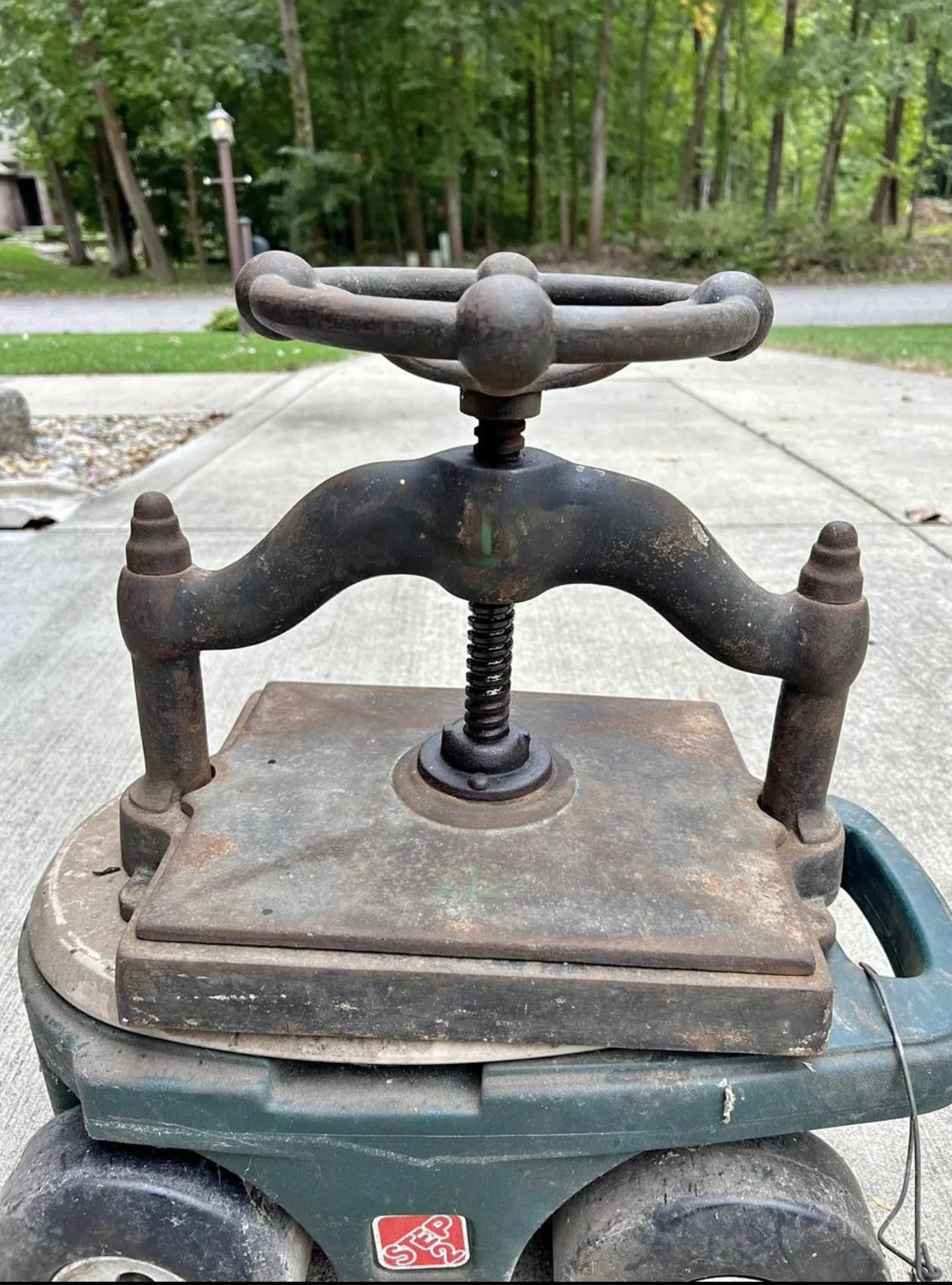Thomas Jefferson’s photo copier
The humble copy press is coming back as a popular decor item and staple equipment in small binderies. You’ve probably seen these in antiques shops or movie scenes in which books are being bound. But the copy press was not meant for the book binding process.
Once an office staple, its story is the age-old narrative of essential to obsolete in two short-centuries. Invented in 1780 by James Watt who also made the steam engine, copy presses were used by Presidents Thomas Jefferson through Calvin Coolidge (see the Smithsonian article about the history of desktop printing)
After writing an important missive with a fountain pen, one would moisten a sheet of onion skin paper, lay that over the wet surface of the page, and press the two together in a copy press until they dried. Voila! The next day, the author would have a copy, seen through the back of the transparent sheet. The emergence of the typewriter and the invention of carbon paper relegated copy presses to the basements of office buildings in the 19th Century.
Colloquially, these machines are now known as “book presses,” but book binders throughout history have used machines like the tall one pictured here. These are standing presses, capable of applying pressure to a whole edition of uniform books while their glue dries.
Between these two sizes of press is the “nipping press,” a desktop version of the standing press that could hold a handful of books for shaping and set-up. It is really the nipping press that copy presses have come to replace in small book-binding shops like ours, where each volume is a one-off and may vary in size from the next.
Recently having found ourselves in need of another copy press in our shop (thank you very much!), we purchased this rusty model for $200 from a man who had rescued it years ago. Still functioning and complete, it was a good candidate for restoration.
The first step was to loosen rusty bolts and screws and disassemble it for cleaning, rust removal, and painting.
A few hours into wire brushing, sanding, and resorting to goops and emollients of various acidities, this beauty was ready for coats of primer and paint and a little dab of machine oil.
The next time you see one of our books, you will know it has spent some intervals in one of our copy presses, which we use as small nipping presses. While new nipping presses are made, we love salvaging machines with character.




